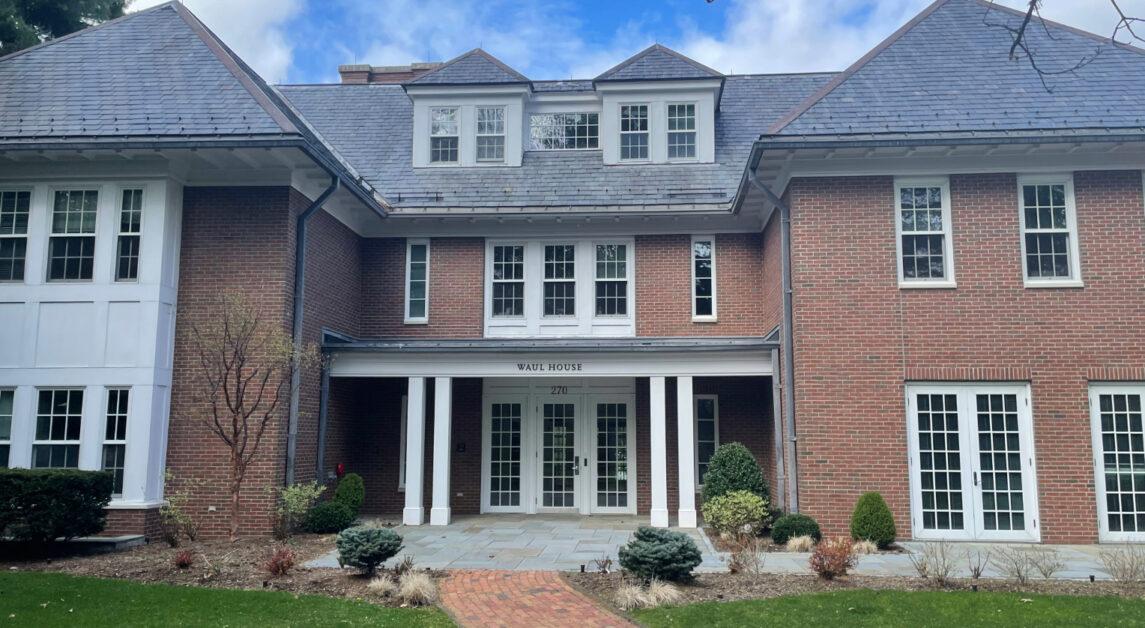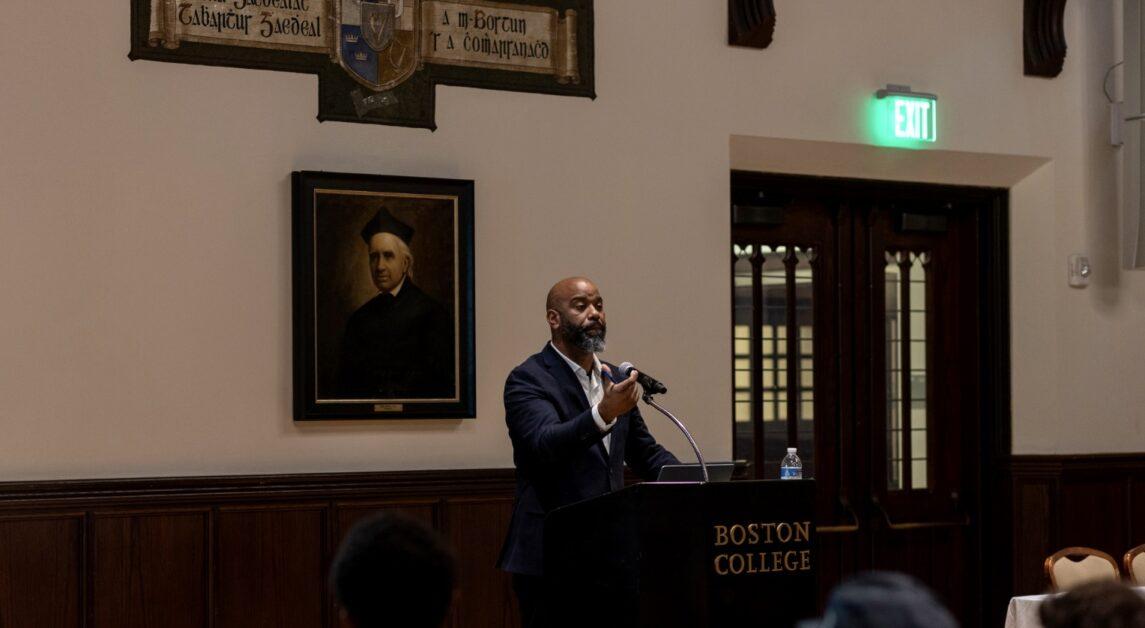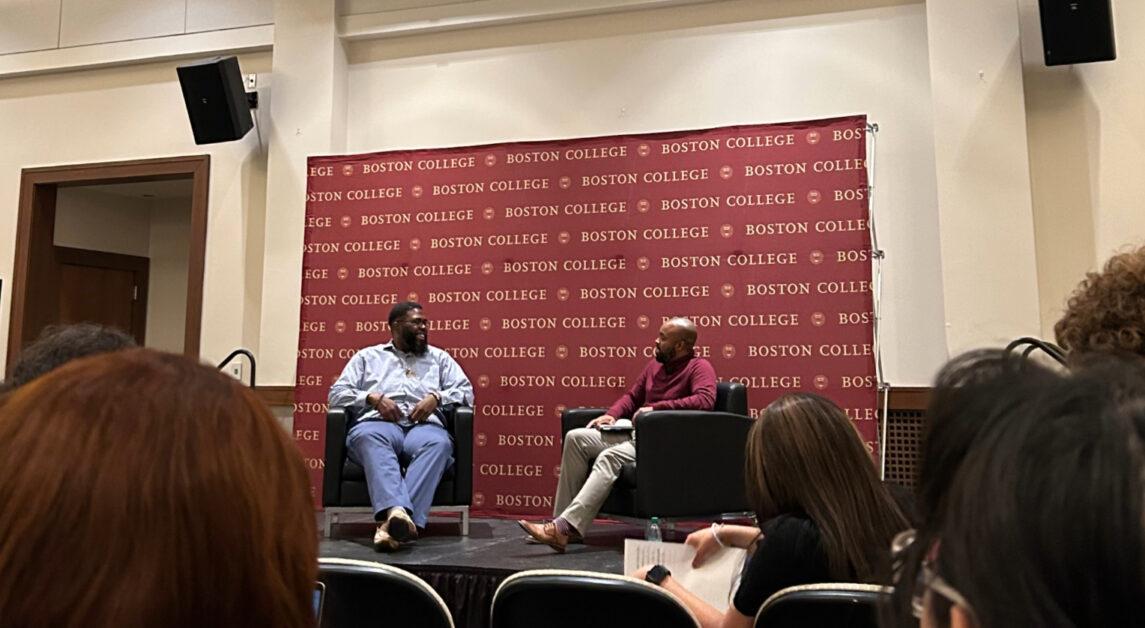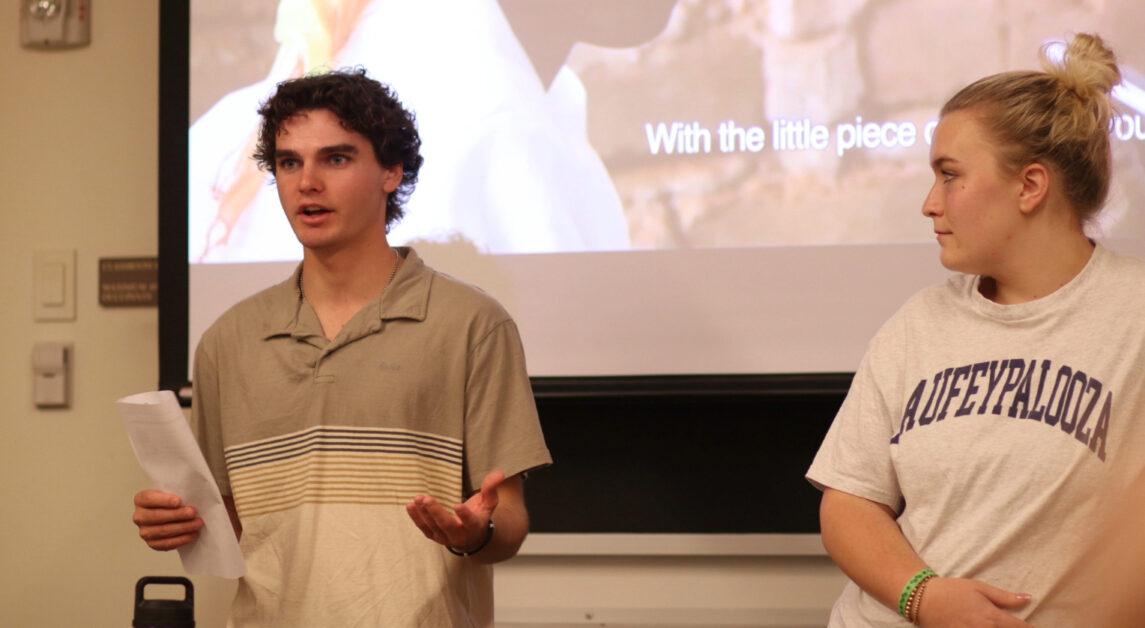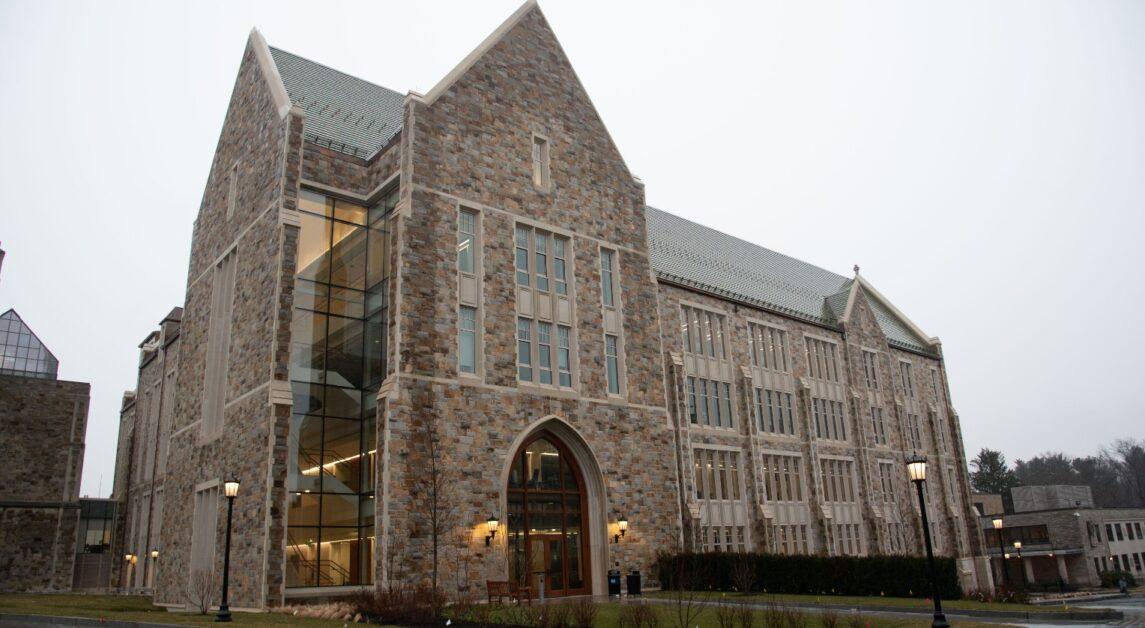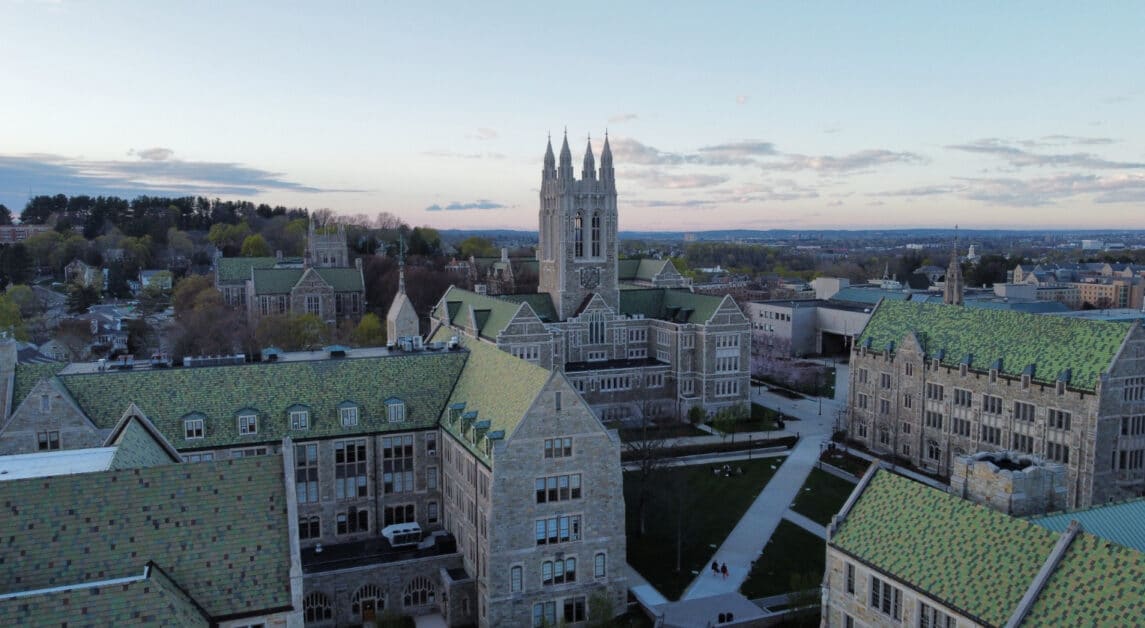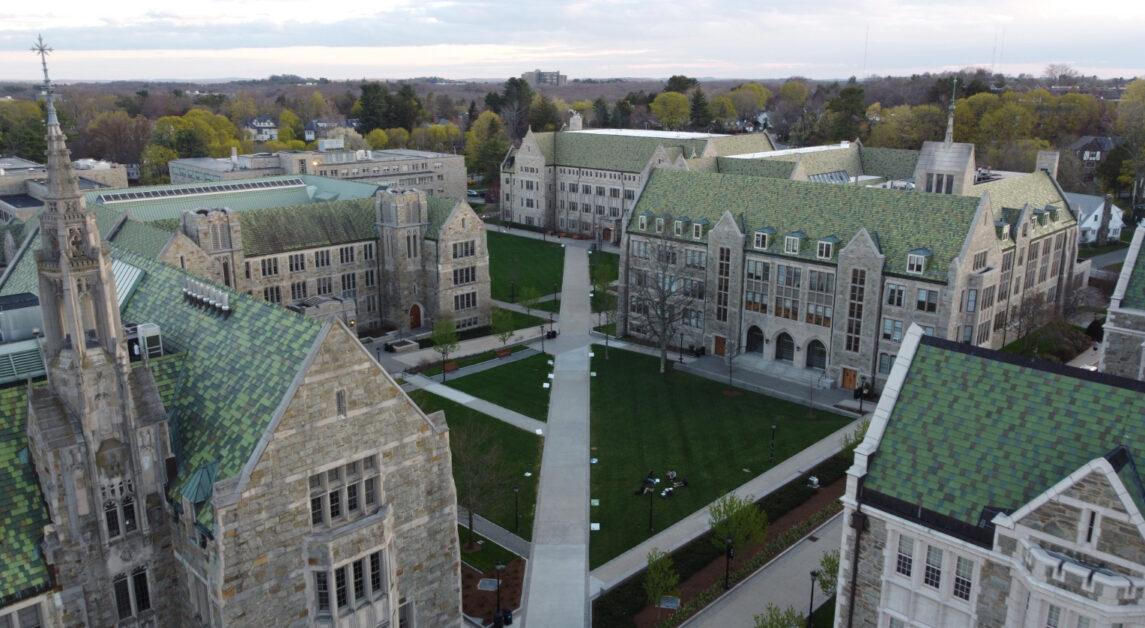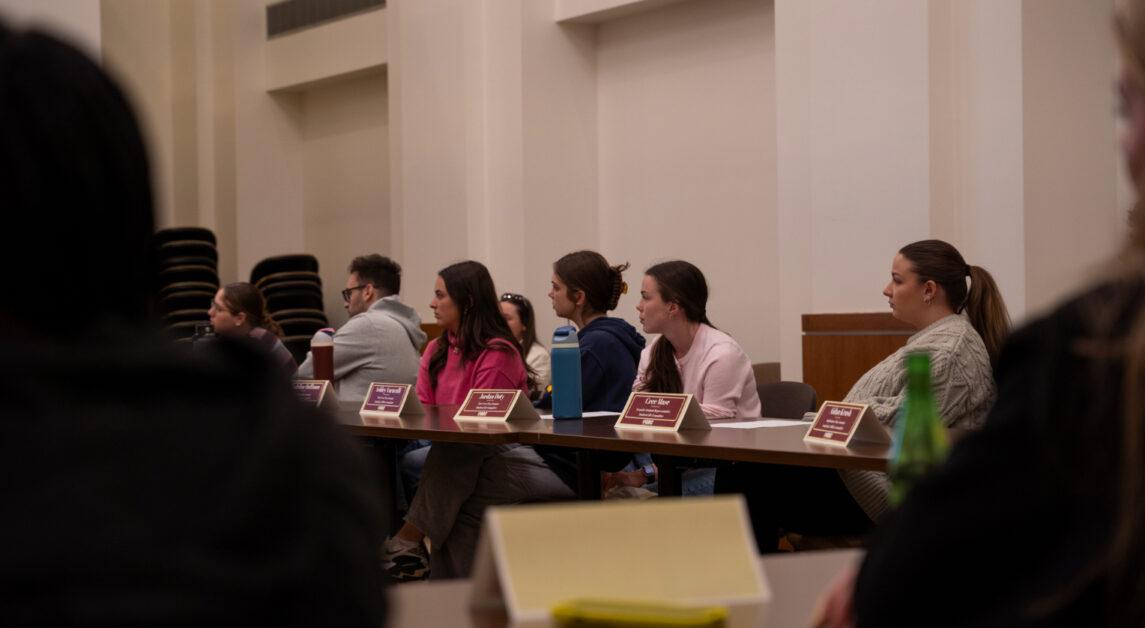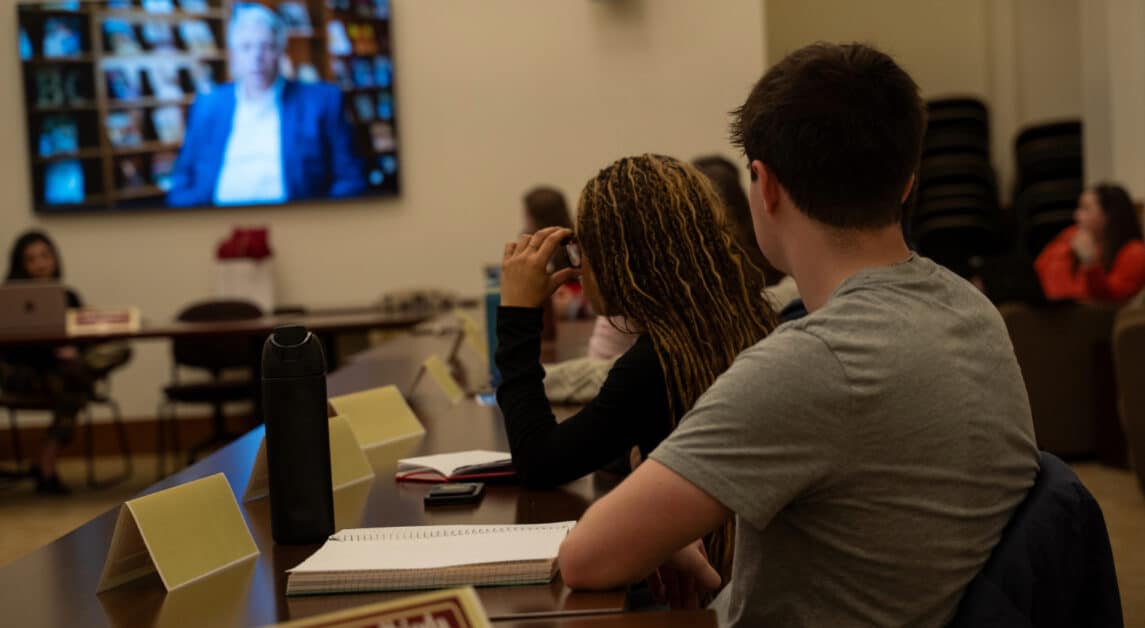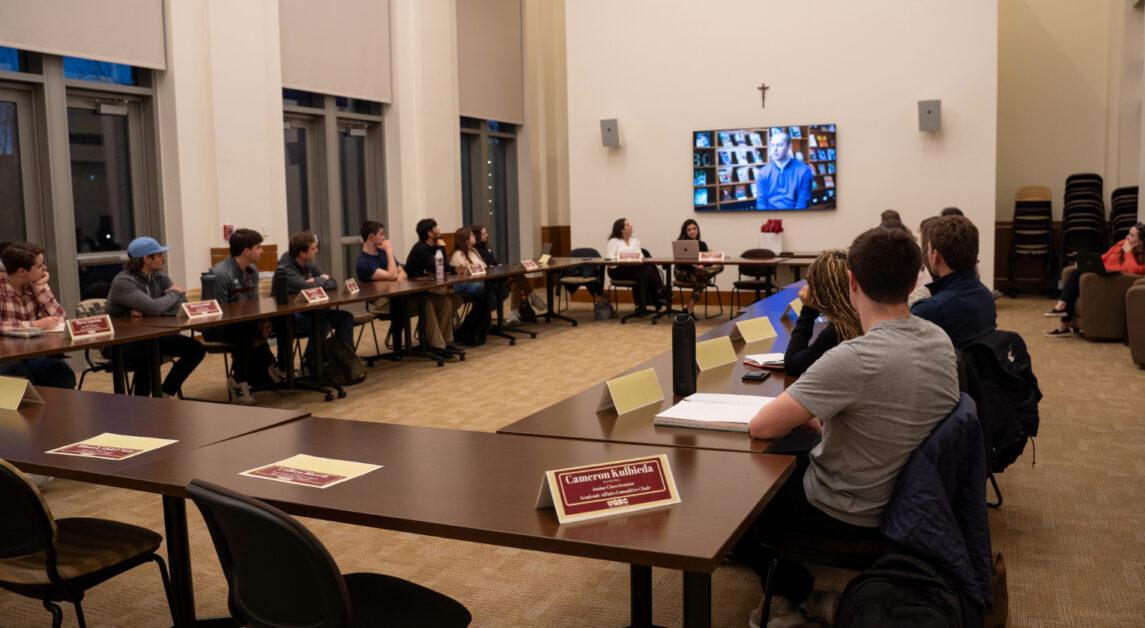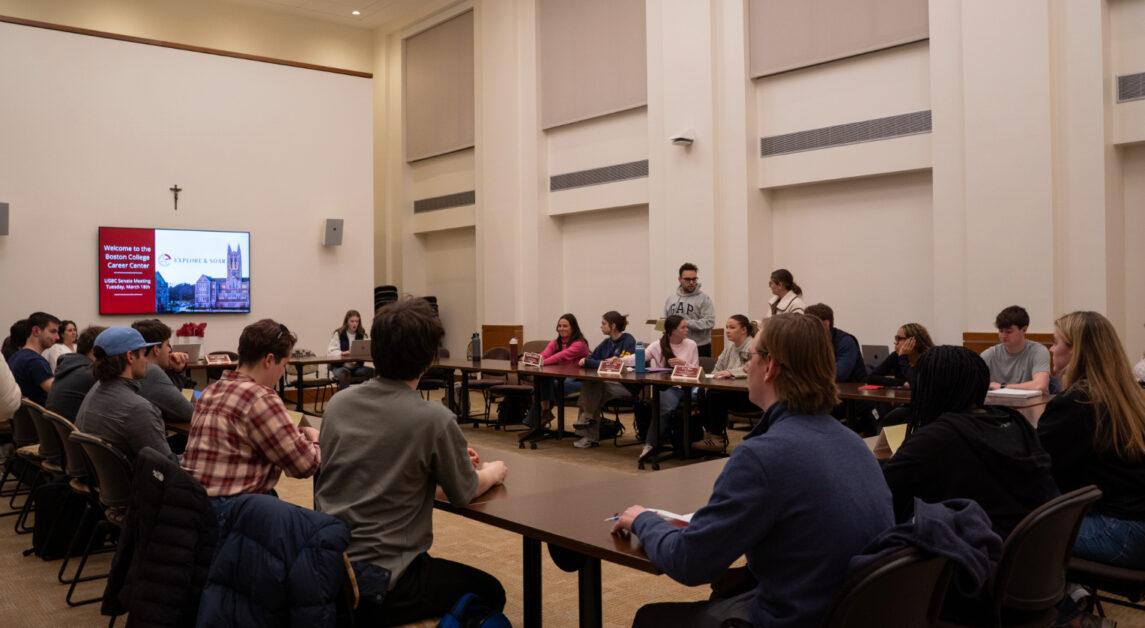Students and administrators gathered Wednesday for the first Student-Administrator Forum of the semester to discuss the upcoming Schiller Institute for Integrated Science and Society. Tom Chiles, vice provost for Research and Academic Planning, and Sunand Bhattacharya, associate vice provost of Design and Innovation Strategies, joined a panel of students to talk about the future of STEM programs at Boston College.
In his presentation, Chiles recalled the moment four years ago when he began thinking about what building a STEM institute like Schiller would do for BC. He realized it could be an opportunity for the University to provide students with a “completely unique” and “transformative” experience that links the entire campus together, not just those involved with STEM.
“[Schiller will cause a] shift on this campus as to how we think about learning [and] how we think about developing the whole person beyond an academic standpoint,” Chiles said. “How we get students to start thinking about design in the sense of the process, not just physically putting things together.”
He explained that the key principle at the heart of Schiller is “integration across disciplines.”
The building is set to open by fall 2021, but several Schiller-related programs have already launched, including the Global Public Health minor and the Innovation through Design Thinking course. The Shea Center for Entrepreneurship, an already established program, will also move to Schiller so that students with skills in business and management can also develop a “mindset of innovation,” Chiles said.
Chiles, who has worked at BC since 1992, observed that students come to campus with concrete ideas about how to change the world. The University’s response should be to help students gain the skills necessary to do that, he said.
“We have a responsibility as a University to help you achieve that and to give you the tools you will need,” Chiles said. “We’re going to get you going on the way. We’re going to catalyze that much sooner than it would’ve happened had you not come to BC.”
Bhattacharya, the first to fill his position since its creation in 2018, said that the goal of Schiller is to teach students how to process innovation and design thinking, and—in line with the University’s Jesuit values—pursue social impact with the hopes of doing good across the globe.
“The end goal is not thinking of learning as a linear process, but as something that happens throughout your life,” Bhattacharya said. “[It’s about] creating that mindset that whatever you do in life, irrespective of what you pursue as a major, you will have an opportunity to be able to think.”
Bhattacharya then introduced three students enrolled in the Innovation through Design Thinking course, which presents students with case studies and in-person interviews and asks them to develop solutions related to a societal problem of their choice
Brandon Lee, MCAS ’21, explained that he feels passionately that health is a “prerequisite” for human rights, and so he focused his project on concerns regarding health care costs. He said his project is centered around connecting people across the country who don’t have access to the technology or resources to “level the playing field” for health.
Dana Connolly, Lynch ’22, another student in the Innovation through Design Thinking course, discussed how in his project he developed a horticulture and greenhouse maintenance program for students who, like him, are not inclined to take STEM courses. The program is designed to expose these students to new ideas and environmental principles, he said.
Michael Osaghae, president of the Undergraduate Government of BC and MCAS ’20, also enrolled in the course because of his interest in advocacy and racial justice. He explained that the course helped him learn how design fits into the process of effecting change and allowed him to explore the question of whether solutions are reaching marginalized communities.
Chiles emphasized that the students on the panel, who represented a variety of academic disciplines, exemplified the purpose of Schiller to create a school-wide culture of innovation.
“[Schiller is about] integrating the entire University together to solve problems that impact society, to try to identify solutions,” Chiles said.
In the town hall portion of the night, one student voiced concerns about a shortage of faculty members in the computer science department, and he asked if Schiller might alleviate some of these hardships.
Chiles explained that many universities have struggled to hire and keep computer science faculty as demand in the private sector has drawn them away from academia. He said the computer science department will be housed in Schiller, and over time, BC hopes to grow the department by hiring more faculty, and providing it with more resources such as digital innovations labs and robotics.
Conor McCormick, co-director for the Undergraduate Government of BC’s Council for Students with Disabilities and MCAS ’22, raised concerns about the architecture of the new building and asked how it will accommodate students with disabilities. McCormick added that the existing maker spaces—multi-purpose work spaces—in Higgins Hall are not entirely accessible.
Chiles responded by noting that while BC is bound by existing law, such as the Americans with Disabilities Act, there are always more considerations to make concerning accessibility. He explained that architects are working toward ensuring all lab tables and sinks, as well as the building as a whole, are accessible, with the goal of making the building as inclusive as possible.
Featured Image Courtesy of the Office of University Communications


